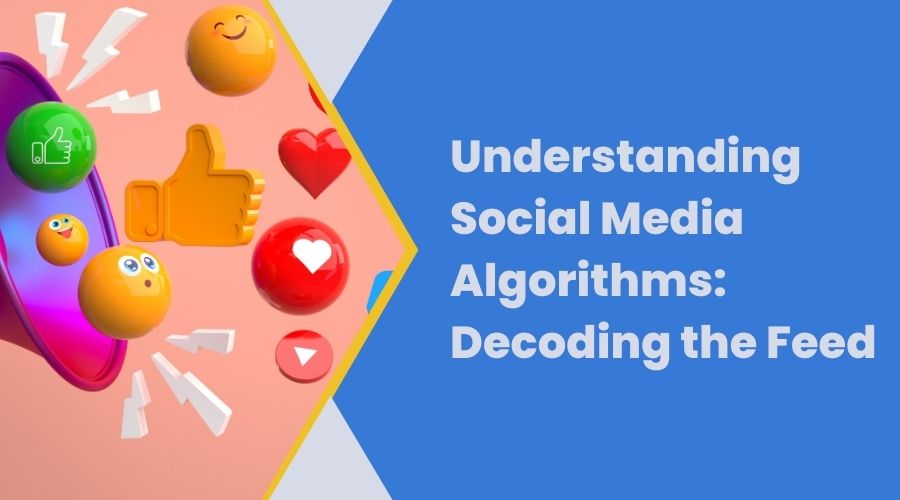Social media has become an essential component of our lives in the current digital era. Scrolling through our feeds, liking posts, and interacting with information takes up hours. How do these platforms choose which content to display to you, though? Social media algorithms are useful in this situation. In this blog article, we’ll dig into Social media algorithms’ structure and how they affect your social media experience.
What are Social Media Algorithms?
Social media algorithms are a complex set of rules and mathematics that platforms like Facebook, Instagram, Twitter, TikTok, etc., use to determine priorities and display to users. These algorithms explore a variety of resources to create a feed for each user based on their interests, habits and interactions.
Note:-
Is it time to step up your social media game? If you need professional social media management in Dubai, look no further than Prontosys. Our staff has the experience and creativity to help you achieve your goals, whether you’re a large company looking to connect with audiences on a deeper level or a small business looking to increase brand awareness. Reach out to us now to learn more about our customized social media solutions and start using Prontosys to start making waves in the digital world.
How Social Media Algorithms Work

Understanding how social media algorithms work can help you navigate these platforms more effectively. Here’s a simplified breakdown of the process:
- Content Relevance: The algorithm assesses the relevance of each piece of content based on factors like keywords, hashtags, and user engagement.
- User Engagement: Engagement metrics such as likes, comments, shares, and clicks play a crucial role in determining the visibility of a post. Higher engagement indicates that the content is resonating with the audience and is more likely to be shown to others.
- Personalization: Social media algorithms prioritize content that aligns with each user’s preferences and interests. This personalization ensures that users see content that is most likely to capture their attention.
- Timeliness: The recency of posts also influences their visibility in the feed. Newer content is often given priority over older posts to keep the feed fresh and relevant.
Decoding the Feed: Factors Influencing Content Visibility
Now that we have a basic understanding of how social media algorithms operate, let’s explore the key factors that influence content visibility on these platforms:
1. User Engagement
User engagement is one of the most important factors considered by social media algorithms. Posts that receive large numbers of likes, comments, shares and other interactions are highly valued and therefore show a large audience. Encouraging interaction through compelling headlines, interactive posts, and calls to action can help increase the visibility of your posts.
2. Content Quality
The quality of your content plays an essential role in determining how it will be seen on social media. High-quality, relevant, and visually appealing content tends to engage and engage users. Focus on creating content that adds value to your audience’s lives and matches their interests and preferences.
3. Relevance and Context
Social media algorithms prioritize information about each user’s interests and preferences. Customizing your content to appeal and including relevant keywords and hashtags can increase visibility. Additionally, posting content relevant to current trends and events can boost its prominence in users’ feeds.
4. Consistency
Consistency is key when it comes to maintaining visibility on social media. Consistently posting high-quality content engages your audience and signals to the algorithm that you are active and relevant. Setting a posting plan and sticking to it can help you stay consistently active on social media and increase your chances of reaching an audience.
5. Platform-Specific Optimization
Each social media platform has its own unique algorithms and best practices for content optimization. Become familiar with the unique nuances of each platform and tailor your content accordingly. For example, Instagram prioritizes engaging photos and videos, while Twitter prefers updates that are concise and timely. Adapting your content strategy to each platform can boost visibility and engagement.
Navigating Algorithm Changes
Social media algorithms are not static; They are constantly changing and updating to improve the user experience and combat things like spam and misinformation. Navigating these changes requires staying informed and changing your content accordingly. Keep an eye out for updates from social media platforms and be prepared to adjust your approach if necessary.
Tips for Navigating Algorithm Changes
- Stay informed about algorithm updates and changes to platform policies.
- Monitor your analytics to track the performance of your content and identify areas for improvement.
- Experiment with different types of content and strategies to see what resonates best with your audience.
- Engage with your audience regularly and encourage feedback and interactions.
Conclusion
To successfully leverage these platforms to maximize your reach and engagement, understanding social media algorithms is essential. By focusing on things like user engagement, content quality, relevance, consistency, and platform-specific optimization you can increase the visibility of your content and you have built a strong online Tray informed, adapt to algorithm changes, and continue to test and refine your content strategy to stay ahead in the ever-changing world of social media.
Read more related blogs at:- Dutable.com


